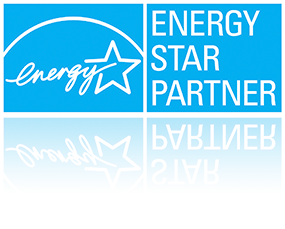Rust Grip® Frequently Asked Questions
- What surfaces can Rust Grip® be applied to?
- How is Rust Grip® sold?
- Is Rust Grip® safe for use with chemicals?
- What’s the difference between Rust Grip® and a rust converter?
- How long does Rust Grip® last?
- What precautions do I need to take when working with Rust Grip®?
- How do I clean off Rust Grip®?
- Why should I coat my HVAC with Rust Grip?
- How does Rust Grip extend the life of my HVAC?
- Can Rust Grip be used on rubber?
- Can you use Mineral Spirits with Rust Grip?
- What are the surface temperatures of Rust Grip?
1. What surfaces can Rust Grip® be applied to?
Rust Grip® can be applied to aged or new steel or aluminIum, concrete, wood, and rusty or corroded steel and aluminium
2. How is Rust Grip® sold?
5 gallon pail and 1 gallon cans
3. Can Rust Grip® withstand chemicals?
Rust Grip® has been tested against 1,500 different chemicals and is only unsuitable for continuous immersion in ammonia and urea derivates.
4. What’s the difference between Rust Grip® and a rust converter?
Rust Grip® works by penetrating through and coating over the rust to it against further expansion. Rust converters work by chemically changing the rust into a benign form which only lasts for 3 months and must be overcoated or protected.
5. How long does Rust Grip® last?
20+ year lifespan on substrates under normal conditions
6. What precautions do I need to take when working with Rust Grip®?
Practice standard safety precautions when working with Rust Grip®, including protective clothing. Rust Grip® will adhere to and cure on skin. Rust Grip® is USDA-approved (with original 1992 approval letter) and safe, but it will wear on skin for several weeks before being sloughed off with normal skin renewal.
Because Rust Grip® works rapidly, do not leave a container open to the air for longer than 4 hours, or Rust Grip® will draw in the ambient humidity and begin to cure. Use caution when resealing the container, as any Rust Grip® on the seal track of the lid or container may cause the two surfaces to seal. A brush or roller used to apply Rust Grip® cannot be cleaned.
7. How do I clean off Rust Grip®?
As long as it is immediately cleaned after it is applied, Rust Grip® can be removed with xylene or MEK. There is no way to remove Rust Grip® when it has set. Brushes and rollers must be thrown away. Flush spray machine, hoses and gun with solvents to clean out. When breaking for lunch, seal off Rust Grip® container, run solvent through the machine and hoses and leave gun submerged in solvent pail.
8. Why should I coat my HVAC with Rust Grip®?
Rust Grip® protects your heating and air conditioning unit from the moisture in our coastal salt air as well as weather to preserve it and extend the life of your unit.
9. How does Rust Grip® extend the life of my HVAC?
If you’ve lived on the coast for any amount of time, you know the impact that salt water can have on your home and it’s systems. Even if you don’t live directly on a body of water, the salt travels in the air for kilometres and can affect the way your home’s systems work and how long they last. Rust Grip® protects your HVAC from the salt air and corrosion that is common here at the beach. By preventing salt and moisture from penetrating and causing corrosion on your HVAC unit, Rust Grip® can extend the life of your HVAC by up to 7 years!
10. Can Rust Grip® be used on rubber?
Rust Grip® must not be applied on or within 2 inches of chlorinated rubber
11. Can you use Mineral Spirits with Rust Grip®?
Never use mineral spirits to prep surfaces or to thin this product.
12. What are the surface temperatures of Rust Grip®?
- Maximum Surface Temperature when applying; 150°F (65°C)
- Minimum Surface Temperature when applying; 50°F (10°C)
- Maximum Surface Temperature after curing; 325°F (163°C)
- Failure will occur at a constant temperature equal to or greater than 302°F (150°C); Consult SPI Coatings for intermittent temperatures greater than 302°F (150°C)

























